#miriam x bryn
Photo
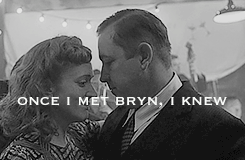



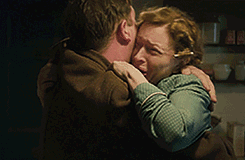



ultimate otp challenge || 1/5 ‘old married couples’ » miriam & bryn brindsley
↳ “What was it about Bryn that made him certain he was the man for you?”
#homefiresedit#perioddramaedit#period drama#home fires#itv home fires#miriam brindsley#bryn brindsley#miriam x bryn#mine*#homefires*#otp*#sorry but they have more sad than happy moments#and i got lazy and just wanted to do this#oh well i'll make more so no worries#or maybe you should be worried if this is shit
47 notes
·
View notes
Photo

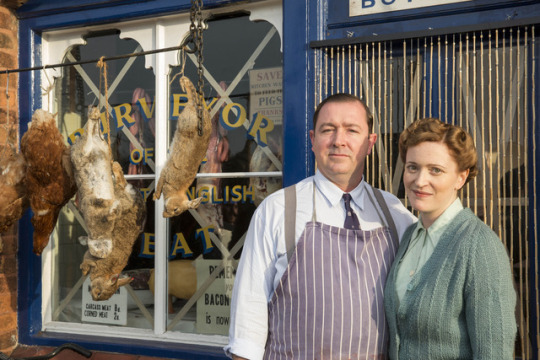

0 notes
Text
Hidden Gems and the Path Forward: An Interview with Natalia Angeles Vieyra / Infinite Spaces
PAFA’s upcoming summer show, Infinite Spaces: Rediscovering PAFA’s Permanent Collection, seeks to both feature the underexposed highlights of the collection, as well as its wide array of new acquisitions. Curatorial Assistant Natalia Angeles Vieyra (PhD candidate, Temple University), has been intimately involved with curating primarily one section of the show, “Interior Realms,” and was kind enough to provide some insight into her experience working with historic objects, and specifically the museum’s works on paper.
Though the four other thematic sections of the show, “Urban Zones,” “Environmental Expanses,” “Psychological Passages,” and “Fantastical Universes” employ both contemporary and historical selections from PAFA’s collection, the works on paper for Vieyra’s “Interior Realms” are mostly 19th and 20th century historical objects. Print collections became more and more common during this period, as people used different art objects to turn interior spaces into the more regal realms that they would come to represent.
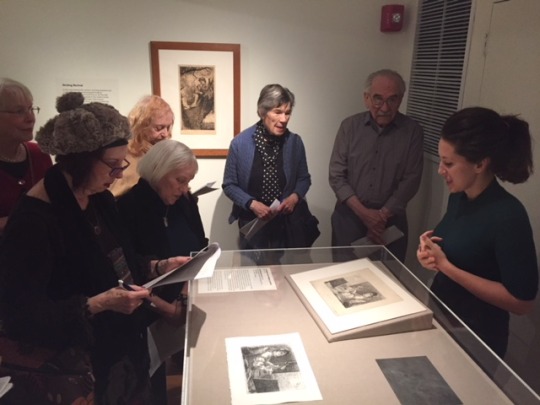
“While a lot of the contemporary works in the exhibition are new acquisitions, the historic component tends to lean more towards these ‘hidden gems,’” Vieyra remarks. “Sometimes they’re hidden gems for a reason because they have condition issues. But we have to ask: How do you find things? Why aren’t they being shown?”
Light or water damage, as well as mold, make the works on paper much more fragile and difficult to exhibit than the more common oil on canvas paintings, and as a result, some objects in the collection are simply not ready to be shown. PAFA’s conservator, Mary McGinn is steadily preparing some of the lesser known and rarely seen works for “Interior Realms,” an exciting moment for viewers and Vieyra herself.
“One of the major benefits of the exhibition being so broad is that it allows us to really show the entire breadth of PAFA’s collection,” Vieyra observes. Attempting to leave no stone unturned, Vieyra and her fellow curators Laurel McLaughlin (Phd Student, Bryn Mawr) and Mechella Yezernitskaya (PhD candidate, Bryn Mawr), utilize every corner of the vaults to create one of the most comprehensive looks at the Academy’s collection ever realized.
Infinite Spaces, as the title suggests, examines the different ways to approach the concept of space, with “Interior Realms” encompassing the heightened value placed on indoor areas.
“‘Interior Realms’ draws from the historical works in the collection, ranging from the mid to late 19th and early 20th century,” Vieyra explains. “This is a period where the interior becomes really important as a space. Cities are very urban, and it’s disgusting and dirty outside, which is another theme of the exhibition. So people are retreating to these domestic interiors and creating their own sort of worlds.”
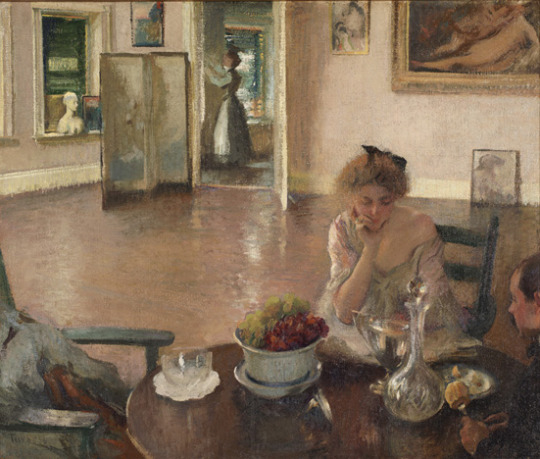
Edmund C. Tarbell, Breakfast Room, ca. 1903, Oil on canvas, 25 x 30 in., Gift of Clement B. Newbold, 1973.25.3
Edmund C. Tarbell’s Breakfast Room, though one of the few paintings in “Interior Realms,” lays out one type of interior into which a more privileged sector of Americans transitioned. With paintings and sculpture adorning the walls, and a fine still-life-like display on the table, the figures go about their business, with the shades closed and no concern for most of the space outside their immediate surroundings. Homes, as depicted here, became an escape from the increasingly industrialized world, truly bringing a new conception of existence into being. Lives were beginning to be spent almost entirely indoors, and entire social structures were defined based on roles created and maintained in those spaces.
When paired with “Environmental Expanses” and “Urban Zones,” “Interior Realms” allows the viewer to see the range of lives led in America, both as it pertains to the historical works and life prior to the conclusion of the second Industrial Revolution, as well as its applications to contemporary life in the United States and the substantial conflicts of the current moment. Be it environmental destruction as a result of economic drivers unempathetic to a greater good, or a civilization rife with mass inequality and segregation, the exhibition shows just how far back the roots of America’s ills extend.
One vital component of “Interior Realms” as it relates to Infinite Spaces and its desire to connect the old and the new, is examining the misogyny that was so rampant in the 19th and 20th centuries. Vieyra notes that during this period, “women are showing up more as art objects, rather than creators.” She continues, recalling that many, “of the works display women absorbed in domestic interiors, these beautiful figures becoming art objects.”
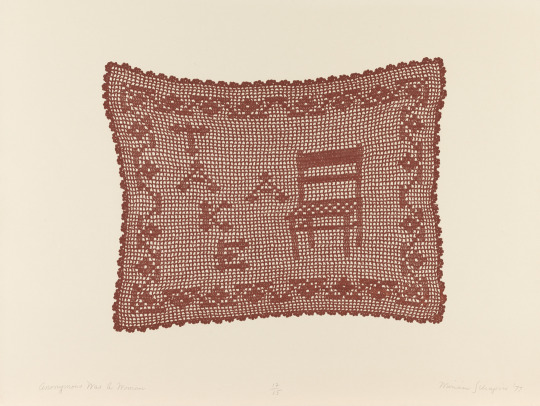
Miriam Schapiro, Anonymous Was a Woman, 1977, Inked lace print, ed. 12/15, 18 1/4 x 24 in., Gift of the estate of Miriam Schapiro, 2015.25.18.8
To combat this antiquated viewpoint, and to show the evolution of American society in terms of its ability to accept women as capable of far more than was often available to them, works such as Miriam Schapiro’s Anonymous Was a Woman (1977), with its jarring statement “take a seat,” bring to light the unfair and repressive constructions endured by women throughout history. Among several others, Schapiro’s print balances out the older works that give less humanity to the models they represent. When viewed in the context of 2018, where powerful men are beginning to truly feel the repercussions of abusive, inappropriate, and misogynistic behavior, “Interior Realms” confronts the viewer with the stark similarities and differences between the old way, and the new.
Infinite Spaces is playing an important role for PAFA as a sort of revived mission statement. In a show that draws from within, Vieyra and her colleagues seek to show how the museum is transforming into an organization in which inclusivity and diversity are core values.
“I really hope that visitors will visit this show and experience the breadth of PAFA’s collection, especially as its interpreted by these five themes,” Vieyra says. “People can also see what PAFA is evolving into as an institution.” With recent acquisitions underlining the collecting concerns of PAFA, and the carefully selected objects from years past, viewers will be provided with dynamic insights into the museum’s road ahead.
-Liam Bailey
Liam Bailey is a recent graduate from the University of California, Santa Barbara, where he majored in Art History. He is currently an Exhibitions Intern at PAFA, assisting Curator of Contemporary Art Jodi Throckmorton with the exhibition Rina Banerjee: Make Me a Summary of the World, Curators Laurel McLaughlin and Mechella Yezernitskaya with SWARM., and Curators Natalia Vieyra, McLaughlin, and Yezernitskaya with Infinite Spaces: Rediscovering PAFA's Permanent Collection. Before arriving at PAFA, Liam co-curated Jane Gottlieb Photographs France with Professor Bruce Robertson, an exhibition at the Art, Design, & Architecture Museum at the University of California, Santa Barbara. He plans to apply to graduate schools for Art History in the fall.
0 notes
Link
Author’s Note: I spent like a weekend marathoning Home Fires recently, and I absolutely fell in love with the show. More specifically with the Brindsley’s. I know I’m late to the party, but I need fanfiction for them. So here you go. Read it or not, love it or hate it, I needed to do this for my own fangirl sanity basically haha.
Much love & happy reading/writing/(insert thing you love most here + ing) to all! ~Lynn
#itv home fires#home fires#miriam brindsley#bryn brindsley#miriam x bryn#joyce cameron#and everything else basically but these are the ones mentioned this chapter#again sorry if this sucks#i haven't written ff in ages#but you know#i couldn't help myself#idek if there's anyone out there who cares about this but oh well LOL#i need this in my life rn
2 notes
·
View notes
Photo

0 notes